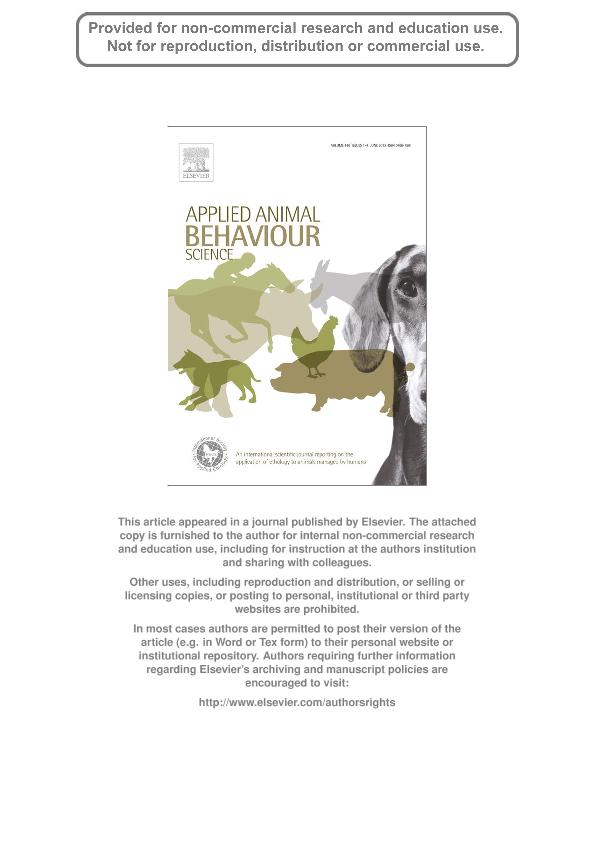Artículo
Effectiveness of fluoxetine to control fur-chewing behaviour in the chinchilla (Chinchilla lanigera)
Fecha de publicación:
06/2013
Editorial:
Elsevier Science
Revista:
Applied Animal Behaviour Science
ISSN:
0168-1591
Idioma:
Inglés
Tipo de recurso:
Artículo publicado
Clasificación temática:
Resumen
Due to its complexity and the relative lack of scientific reports, fur-chewing may be considered as one of the most challenging behavioural problems common to captive chinchillas. The development of this behaviour in commercial farms and the increasing popularity of this species as a pet have increased the public demands for a treatment. The objective of this work was to evaluate the effectiveness of fluoxetine to control the development of chinchillas’ fur-chewing behaviour, using an oral dose of 10 mg/kg/day for a 90 days treatment period. For the measurement of the fur-chewing affected area and its variation during treatment as external sign of whether or not the behaviour was controlled, digital pictures were taken at 0, 45, 75 and 90 days of treatment and after drug withdrawal at 140 days. Results indicated that the greatest difference in percentages of body area affected by the behaviour in control vs. treated animals was observed after 75 days of treatment. However, this was not due to a decrease in the amount of body area affected by fur-chewing in treated animals, but conversely to an increase in the symptoms observed in control animals, that showed a ~10% increase in the fur-chewing affected body area than at the beginning of the experiments. Only ~46% of the fluoxetine treated animals showed a significant reduction in the body area affected by fur-chewing. In summary, the use of fluoxetine in fur-chewing chinchillas showed limited success, mostly reducing the progression of the behaviour.
Palabras clave:
Abnormal Repetitive Behaviour
,
Ssri
,
Obsessive-Compulsive
,
Stress
Archivos asociados
Licencia
Identificadores
Colecciones
Articulos(INICSA)
Articulos de INSTITUTO DE INVESTIGACIONES EN CIENCIAS DE LA SALUD
Articulos de INSTITUTO DE INVESTIGACIONES EN CIENCIAS DE LA SALUD
Citación
Galeano, Maria G.; Ruiz, Ruben Daniel; Fiol de Cuneo, Marta; Ponzio, Marina Flavia; Effectiveness of fluoxetine to control fur-chewing behaviour in the chinchilla (Chinchilla lanigera); Elsevier Science; Applied Animal Behaviour Science; 146; 1-4; 6-2013; 112-117
Compartir
Altmétricas




